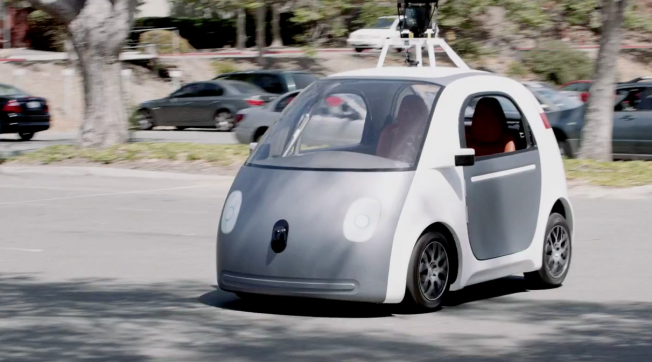 |
| Image courtesy of Adweek |
For those of us who are serious drivers, this is potentially a wonderful development. All of those people who want nothing more than to be able to do everything other than drive during their daily commutes can now choose to do so safely while the car navigates them to their destination which minimal input from them. Taking these distracted drivers out of the general flow of traffic is likely to reduce congestion for everyone else and will hopefully reduce the accident rates caused by inattentive driving. Additionally, since it would be possible to program these cars so that they help optimize traffic flow, their presence could actually have a traffic calming effect by helping to limit the accordion effect that frequently snarls heavily congested freeways. Finally, they can be programmed to provide unparalleled efficiency which means, hopefully, more fuel for the rest of us when we want it.
For cyclists, the early videos of the underlying tech in Google's self-driving cars shows that they are programmed to allow for tremendous deference to cyclists and pedestrians. It senses the presence of cyclists on the road and decreases speed to give sufficient space while scanning the opposing traffic for an appropriate opening in which to make a pass. This means that many of those dangerous car and cyclist interactions, many of which can escalate nearly to blows, will be reduced as the car will simply adjust to allow a greater cushion around the cyclist. That will mean safer and, with the reduced congestion and fewer inattentive drivers, more enjoyable rides. Also, with hopefully less congestion to contend with, municipalities can continue to expand cycling infrastructure to allow for greater use of cycling as a means of transportation and not just recreation.
Sure, the technology is not fully mature just yet, but it is not as if Google is putting huge numbers of these cars out on the streets and having us unwittingly interacting with them. They are still working through and continuing to refine the technology while working out the policy and liability implications in the process. This is an exciting development and could provide transportation options for those people who had been relegated to relying on others in the past. It does indeed open the door to a society where individual car ownership is far less prevalent, but that is not necessarily a bad thing. Fewer individuals owning cars is going to be better for the environment and will continue to help reduce congestion. This also might encourage an increase in spending on public transportation infrastructure that this country needs so badly and improve road conditions for those of us who want to continue to make use of them.
In time, we will see how things all play out. I am doubtful that in my lifetime, we will see the majority of Americans transition to having self-driving cars, but their proliferation is something to be looked upon with excitement, not anxiety.

No comments :
Post a Comment